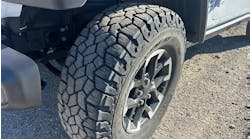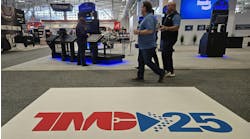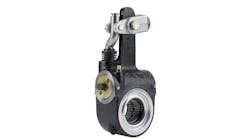The U.S. Environmental Protection Agency (EPA) and the U.S. Department of Transportation’s National Highway Traffic Safety Administration (NHTSA) recently finalized standards for medium and heavy duty vehicles to help improve fuel efficiency and limit carbon pollution.
The final phase two program serves to promote a new generation of cleaner, more fuel-efficient trucks by encouraging the wider application of currently available technologies and the development of new and advanced cost-effective technologies through model year 2027. According to the EPA, the final standards are expected to lower CO2 emissions by approximately 1.1 billion metric tons, save vehicle owners fuel costs of just less than $200 billion and reduce oil consumption by up to two billion barrels over the lifetime of the vehicles sold under the program.
“The overall objective is to reduce the greenhouse gas emissions by 28 percent by 2025 and 80 percent by 2050,” says Al Cohn, director, new market development and engineering support, Pressure Systems International, a provider of automatic tire inflation system for trucks, trailers, and fleets (www.psitireinflation.com).
The First Time
What is especially notable about the phase two program is there are fuel-efficiency and greenhouse gas (GHG) standards for trailers for the first time.
“And what makes this so complicated is there are over 10 specific categories of trailers,” says Cohn.
However, the EPA trailer standards exclude trailers with four or more axles and trailers less than 35’ in length, with three axles, from the rulemaking, which will take effect on Jan. 1, 2018.
“Over a 10-year period, in three-year increments, the stringency (of the standards) increases,” says Cohn. “So, depending on which category your trailer falls under, for that 10-year period, there is between a 3-percent and 9-percent improvement required, versus what is expected in 2018.”
Trailer Technologies
A number of trailer technologies can be spec’d and then utilized to help reduce total fuel consumption by commercial vehicles, according to Cohn.
For box trailers, including reefer trailers, they include:
● Low-rolling resistance tires.
● Automatic tire inflation systems.
● Tire pressure monitoring systems (TPMS).
● Aerodynamic devices and weight reduction technologies.
For non-box trailers, which refer to working vehicles such as tanker fleets, flatbed fleets and container chassis, technologies include:
● Low-resistance rolling tires.
● Automatic tire inflation systems.
● TPMS.
For non-box trailers, tires must meet a rolling resistance standard. To accomplish this, tire manufacturers and retread manufacturers run the tires on a laboratory rolling resistance test. The results are submitted to SmartWay, and if they are 3 percent or better than that of a specific baseline tire, they meet the standard.
The U.S. EPA’s SmartWay program (epa.gov/smartway/index.htm) helps the freight transportation sector improve supply chain efficiency.
While there are a wide range of tires that meet the rolling resistance standard, the onus is on fleets to determine which offering provides the best fuel efficiency while accounting for other factors, including mileage, traction and retreadability.
Air Pressure
“Of course, when it comes to tires, air pressure is absolutely critical if you want to maximize fuel economy, removal miles and retreadability,” says Cohn. “The tires need to be running at the correct pressure all of the time.”
There are two options available to be spec’d and utilized on non-box trailers: automatic tire inflation systems or TPMS. With TPMS, human intervention is required to manually get air into any underinflated tire, and the potential for fuel economy savings is slightly lower.
The EPA trailer standards apply to vehicles sold in the United States, regardless of where they are produced.
“If they come from China, or if they come from Mexico, or they come from Canada, manufactured in those countries and sold here, they still must meet all of these guidelines,” says Cohn.




